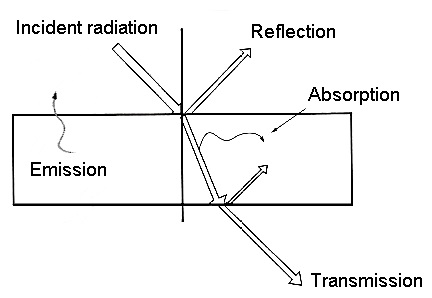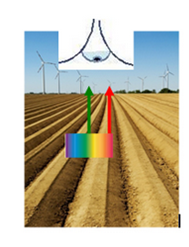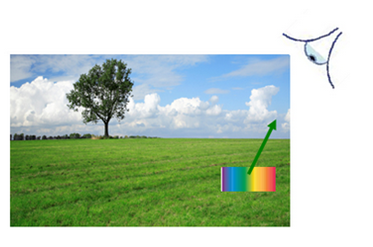2.2 - Interactions with matter
When electromagnetic energy hits a target three different interactions may occur, as illustrated in Figure 2.3:
Figure 2.3: illustration of the different possible interactions between radiation and a surface feature.
So from the incident light on a surface, there may be a fraction which is transmitted, another which is absorbed, and a third fraction that is reflected. This portion of reflected radiation is the reason why we can actually see the objects. Moreover, the colour of the object results from the combination of wavelengths of the reflected portion of light bouncing off the object, as illustrated in the figures 2.4 and 2.5.
This principle is applied while making composites of satellite images. An RGB true colour image is a composite of satellite images using red, green and blue spectral channels. The result is an image that has the same appearance as seen from human eyes.
Figure 2.6 is an example of a true colour RGB Image of the earth showing the ongoing eruption of Chile's Chaitén Volcano, in a region with different types of soil, as well as a variety of bluish tones in sea water.
Figure 2.6: True colour image taken on March 6, 2009 with the Advanced Land Imager on the Earth Observing-1 (EO-1) satellite over South America (Image from http://earthobservatory.nasa.gov/NaturalHazards/).
While sensing vegetation from space, we will be interested in the reflectance mechanism. Reflectance is usually expressed as a fraction of the total amount of energy striking an object, taking the values:
- 1 - if all of the incident radiation bounces off and is detected by the sensor;
- 0 - if no light returns from the surface
In most cases, the reflectance value of an object for any region of the electromagnetic spectrum is somewhere between these two extremes.



